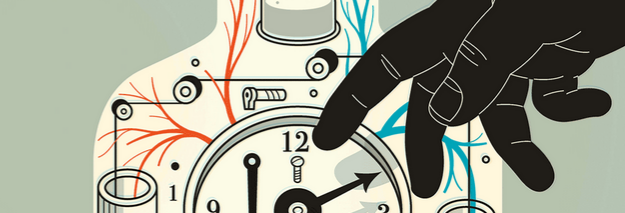Stanford Medicine Magazine / Spring 2015 /
Ancient Egyptians used water clocks to measure the passage of time. Mechanical clocks started ticking away in 14th-century Europe; and pocket watches, in the 17th century. Timex was founded in 1854 and Rolex in 1905. Today, you might use a smartphone to follow your schedule. But before all these timers, there were living cells — themselves impeccable timekeepers.
Cells in the human body follow cycles that repeat anywhere from once a second, in the case of a heartbeat, to once a month, for the female reproductive cycle. Living organisms have biological cycles that span all sorts of other time frames — the fastest-replicating bacterial cells duplicate every 15 minutes, bears hibernate annually, some cicada species emerge from the ground only once every 17 years, and many bamboo plants go for more than 60 years without flowering.
Scientists have watched these cycles with awe, asking what keeps these clocks ticking. Slowly, they’ve revealed many of the molecular gears that let cells stay on schedule. And even among disparate species — and between cycles with drastically different periods — they have uncovered commonalities.
“All these cycles are driven by clocks,” says James Ferrell, MD, PhD, a Stanford professor of chemical and systems biologyand of biochemistry. “There’s almost nothing in common between each clock when it comes to the exact genes and proteins involved. But at a fundamental level each type of circuit is the same.”
With that knowledge in mind, scientists have now turned to a new type of question: How can we take advantage of what we know about the clock? … Read more at Stanford Medicine Magazine.

